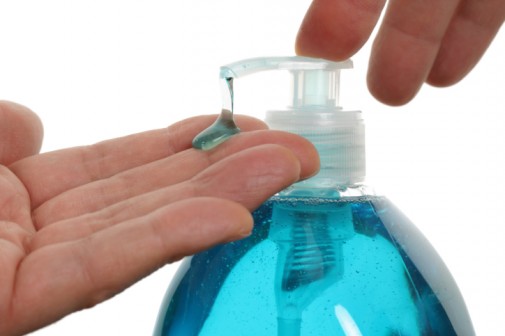So you think you know how to wash your hands?

Do any of these situations sound familiar? A new acquaintance reaches out to greet you with the same hand he used to cover a sneeze moments earlier. You and your friends are super hungry, and here comes the waiter with the food, but you just remembered — you haven’t washed your hands.
Germ theory says you’ve got to do something: Stomach and respiratory illnesses could be cut by 31 and 21 percent, respectively with hand washing, according to an August 2008 study in the American Journal of Public Health.
But which is better: making a b-line to the bathroom for a soap and water scrub, or staying put and doing a quick squirt of hand sanitizer?
A soap and water scrub is the best way to get rid of germs your hands, according to the Centers for Disease Control and Prevention (CDC). And not just germs from obvious sources like sneezing and coughing, but it also gets rid of soil that has set in from basic activities like handling money, touching doorknobs, changing diapers, using public toilets and faucets or being any where near an animal.
Throughout these daily activities, we’re also constantly touching our faces, and the contamination contributes to a 31 percent risk of catching the flu virus, according to a September 2009 study in the journal Risk Analysis. We also transfer those germs to other people and objects during our daily routine.
Here’s why soap and water is the best bet: The soap lather loosens the germs, the friction helps unstuck them from our hands and the water rinses them away.
Even rinsing with water alone can be better than doing nothing. Water alone can cut the presence of fecal bacteria down to 23 percent, according to a January 2011 study in the International Journal of Environmental Research and Public Health. Of course, using soap trumped that even more, cutting bacteria down to 8 percent.
For those situations when you can’t get to soap and water, hand sanitizer with at least 60 percent alcohol is plan B.
Sanitizers are effective at reducing some germs, but soap at water is more effective at removing germs.
The proper way to hand wash
Having soap and water available is not enough. Technique and timing are also important. Here are tips from the CDC on the proper way to wash your hands with soap and water:
- After wetting your hands—the water temp doesn’t matter—apply the soap.
- Rub your hands to lather the soap. Scrub the backs of your hands, around your fingernails and between your fingers.
- This is key: You have to scrub for at least 20 to 30 seconds. If you don’t want to count, the CDC advises singing the happy birthday song twice. You could also hum “Twinkle Twinkle Little Star” or the ABC song.
- After rinsing thoroughly, use a clean towel to dry your hands. Towels wipe away the last bits of germs that the soap left behind. If towels aren’t available, then air dry.
Related Posts
Comments
One Comment
About the Author
health enews staff is a group of experienced writers from our Advocate Health Care and Aurora Health Care sites, which also includes freelance or intern writers.


















Part of the reason people don't want to wash their hands is because of the time and nuisance required to dry them. Air drying takes too long. Paper towels feel wasteful and sometimes they are not available. You need to pop the dispenser twice to get enough to do the job. I have found the fastest, most effective way to dry hands after washing and rinsing s to use one small paper towel under a hand dryer. The towel serves to absorb the water quickly and the hot air blows it away in half the time it would take without the towel. The drying is more thorough than using the paper alone. You can use one small towel and even though it becomes saturated, the process works — surprising. Most bathrooms have either paper or hand dryers. Done right, the combination is best.